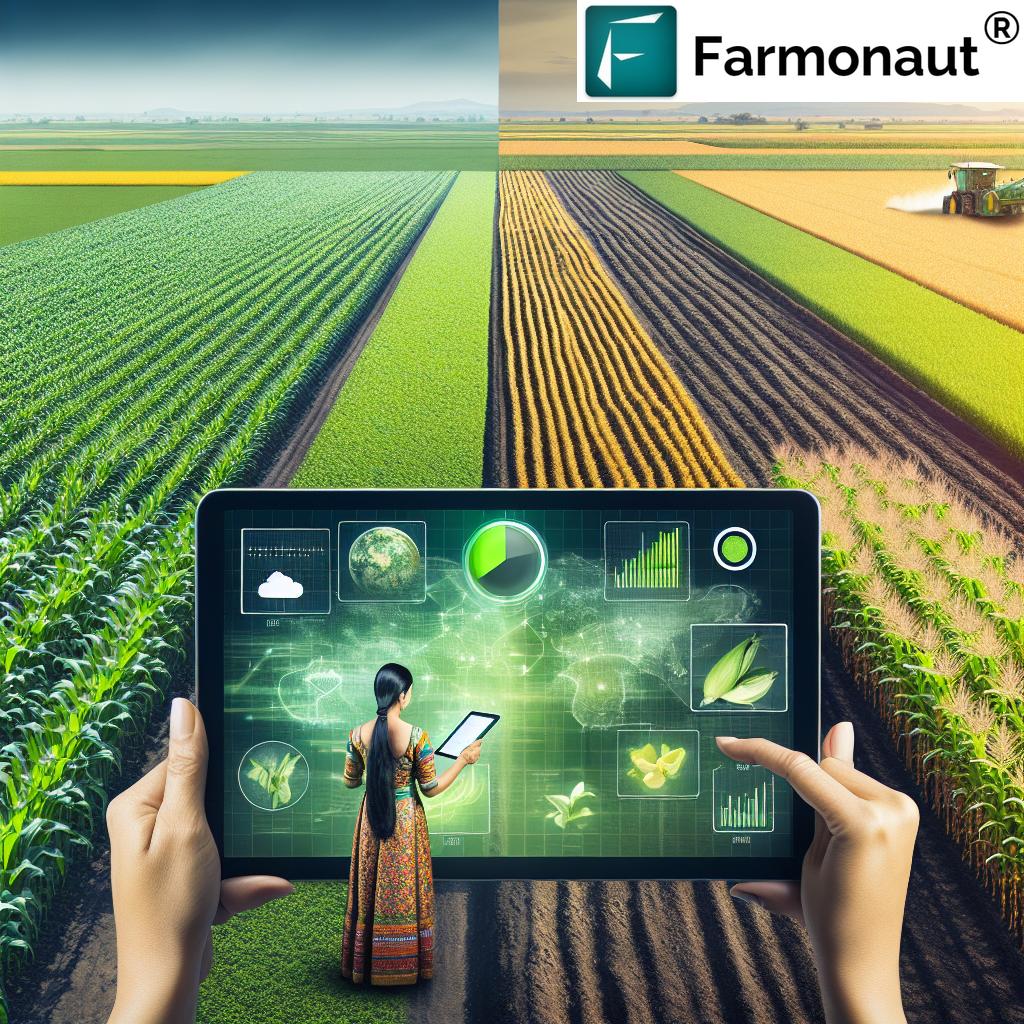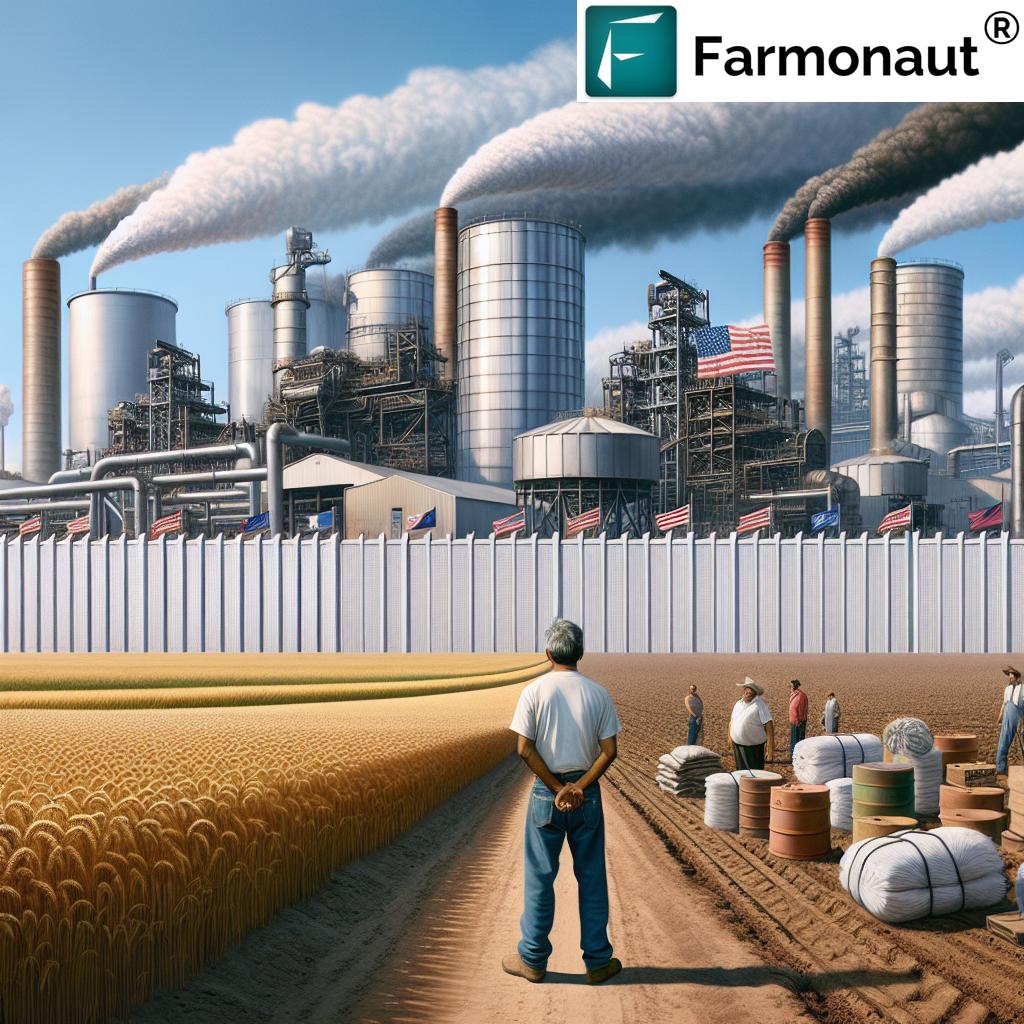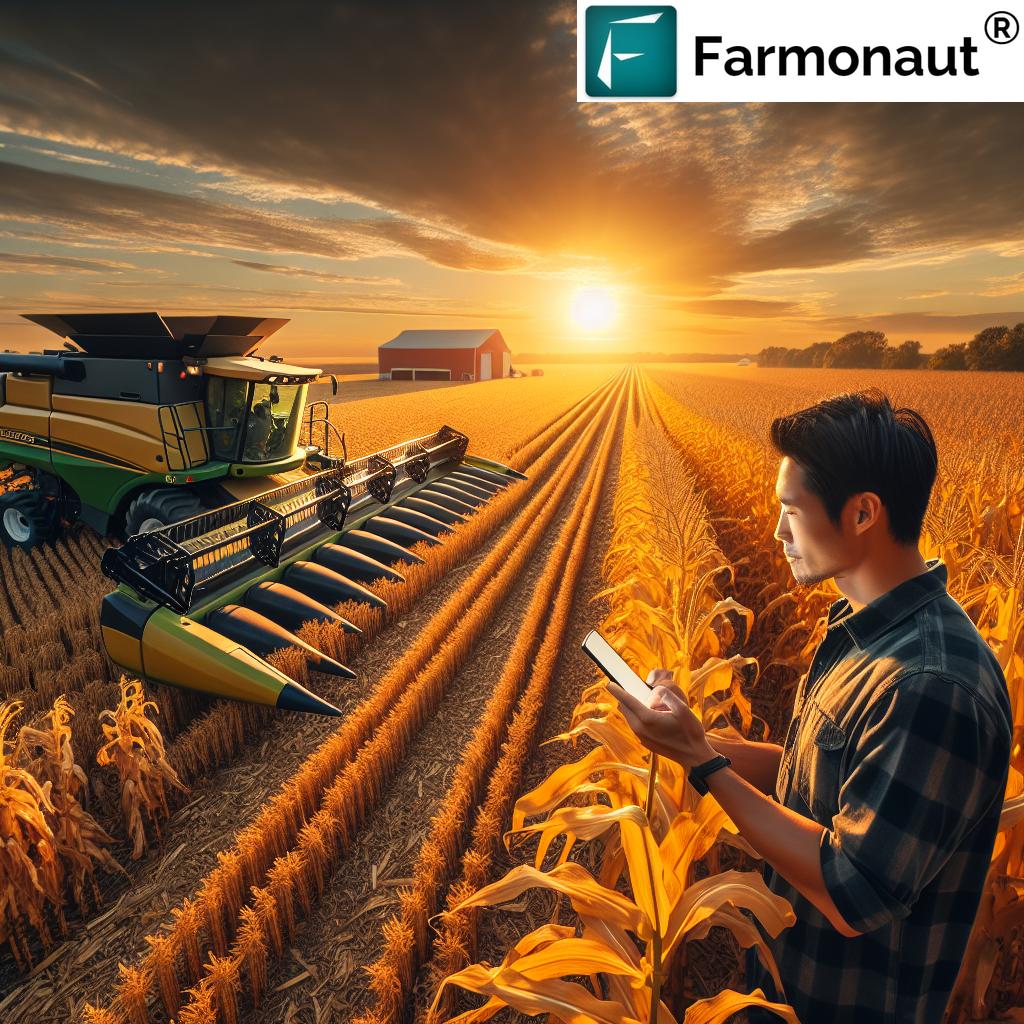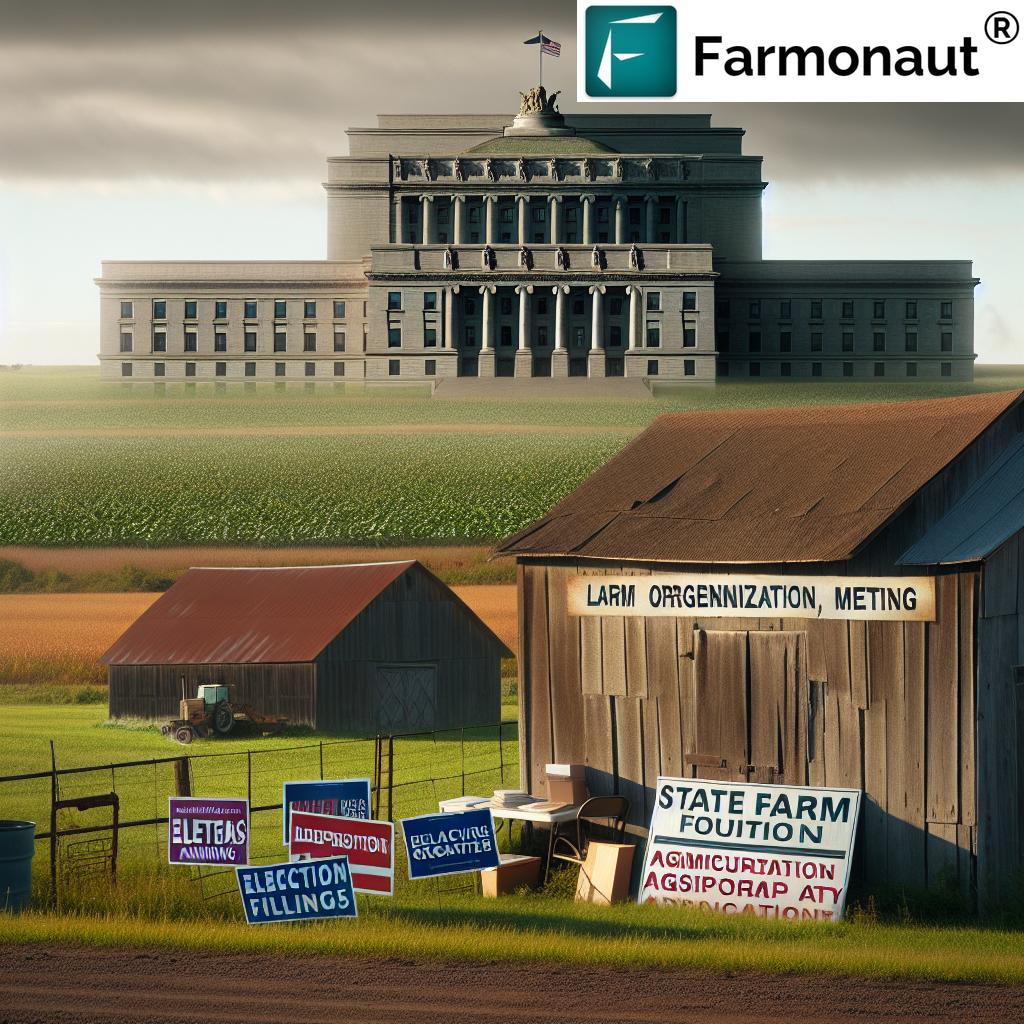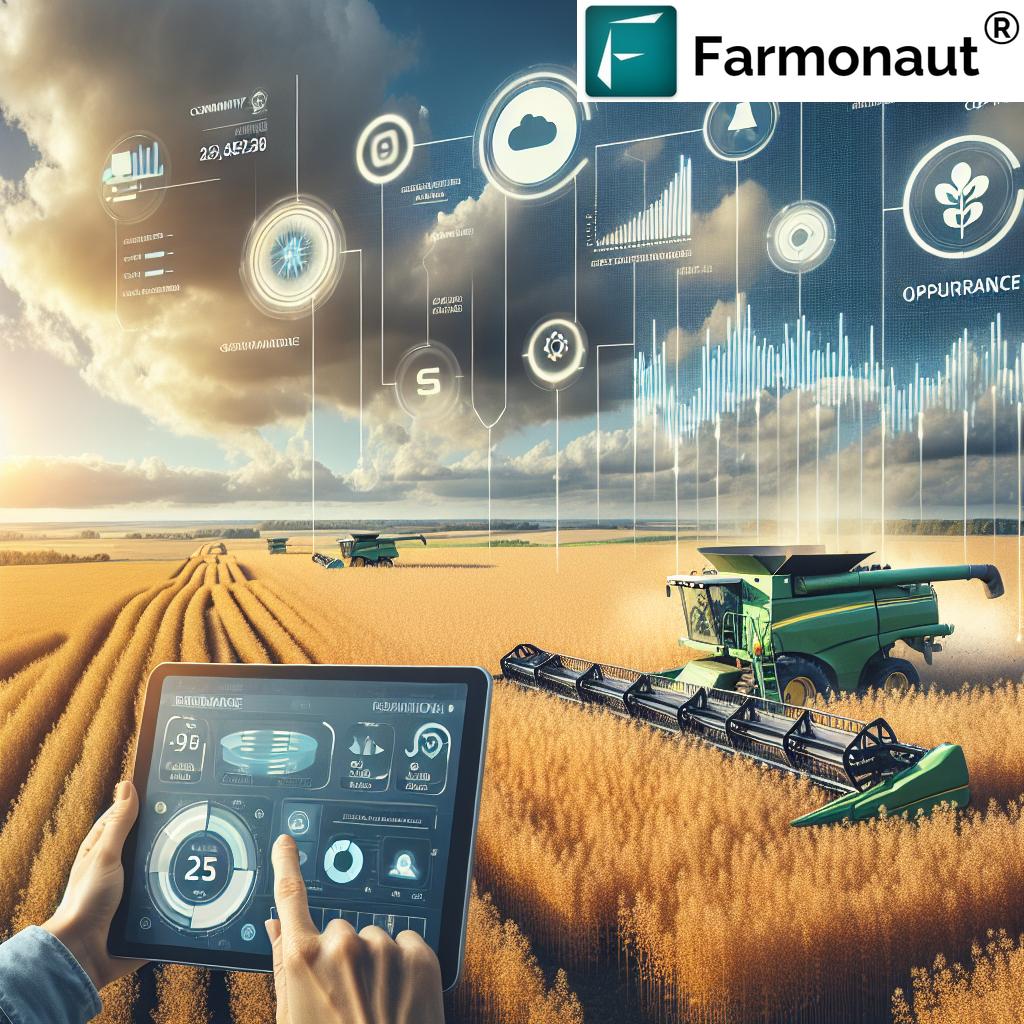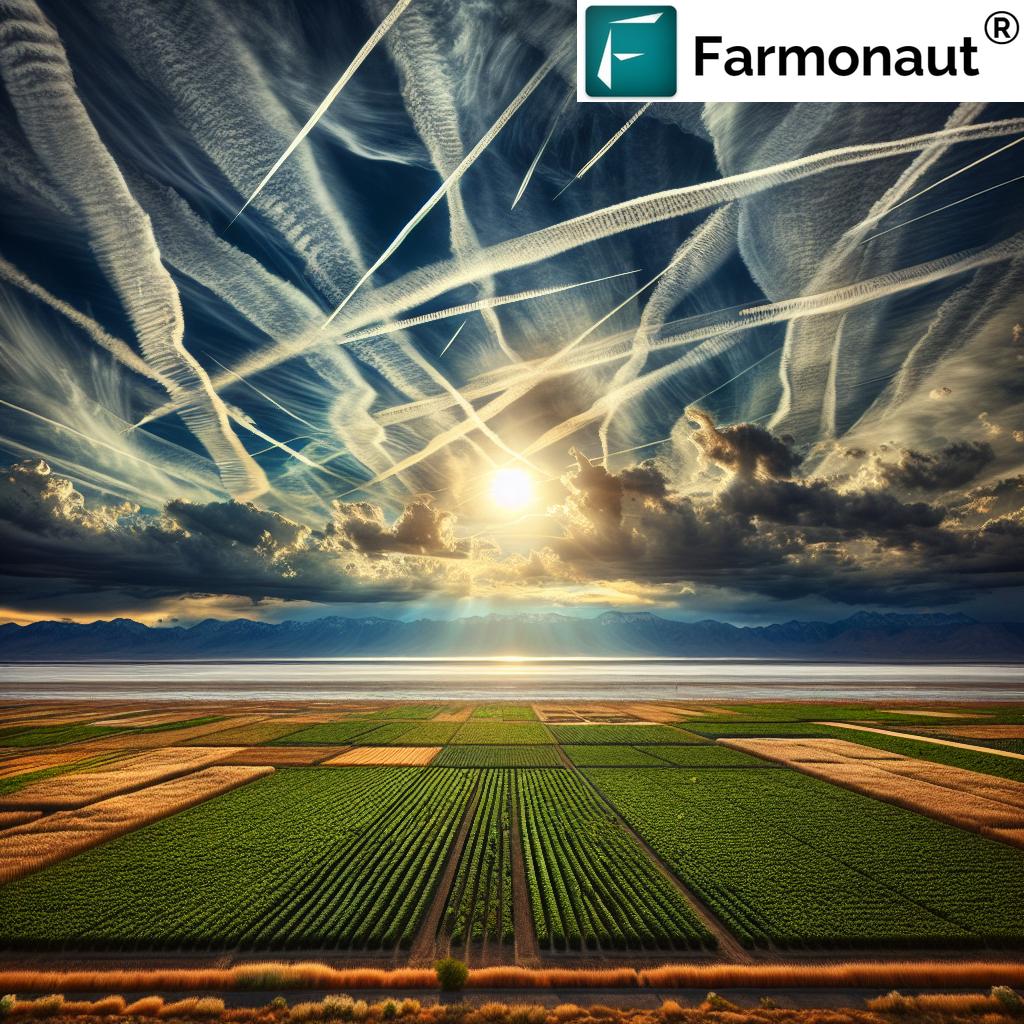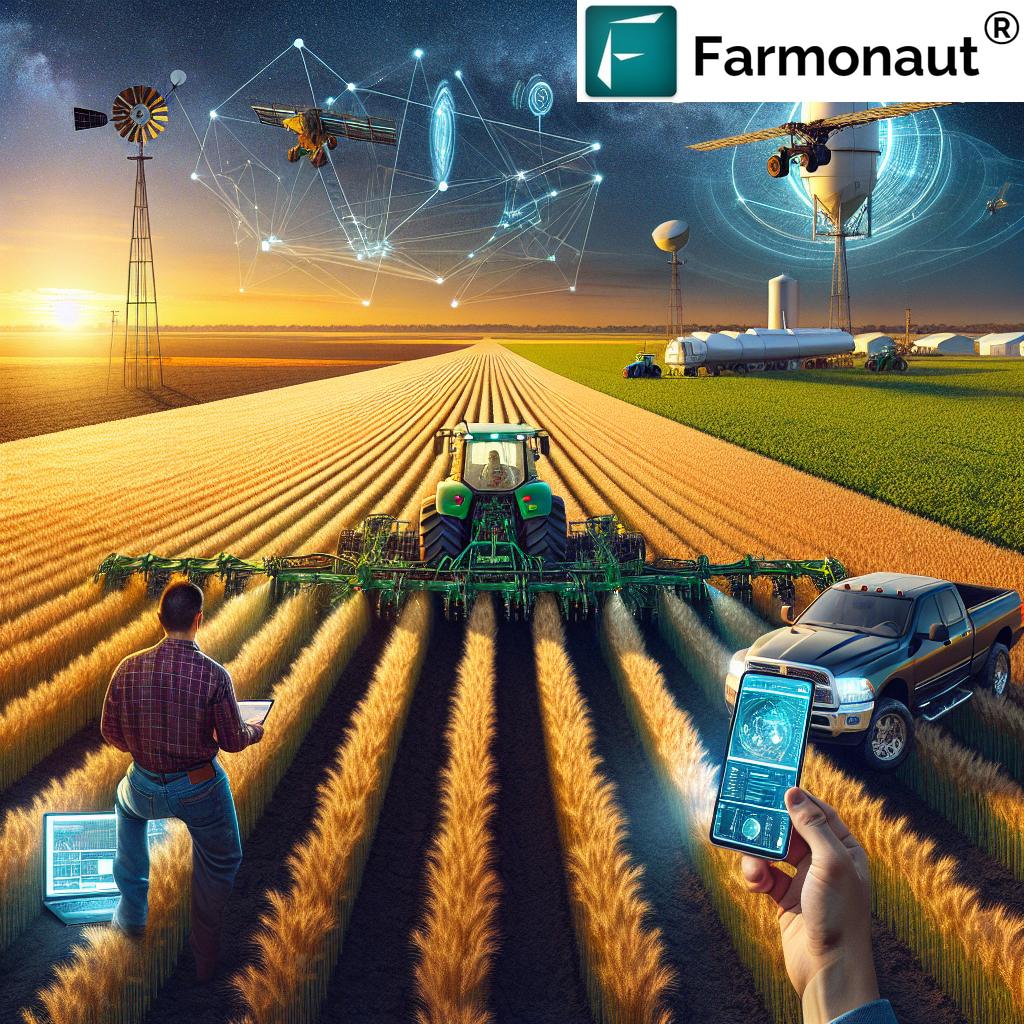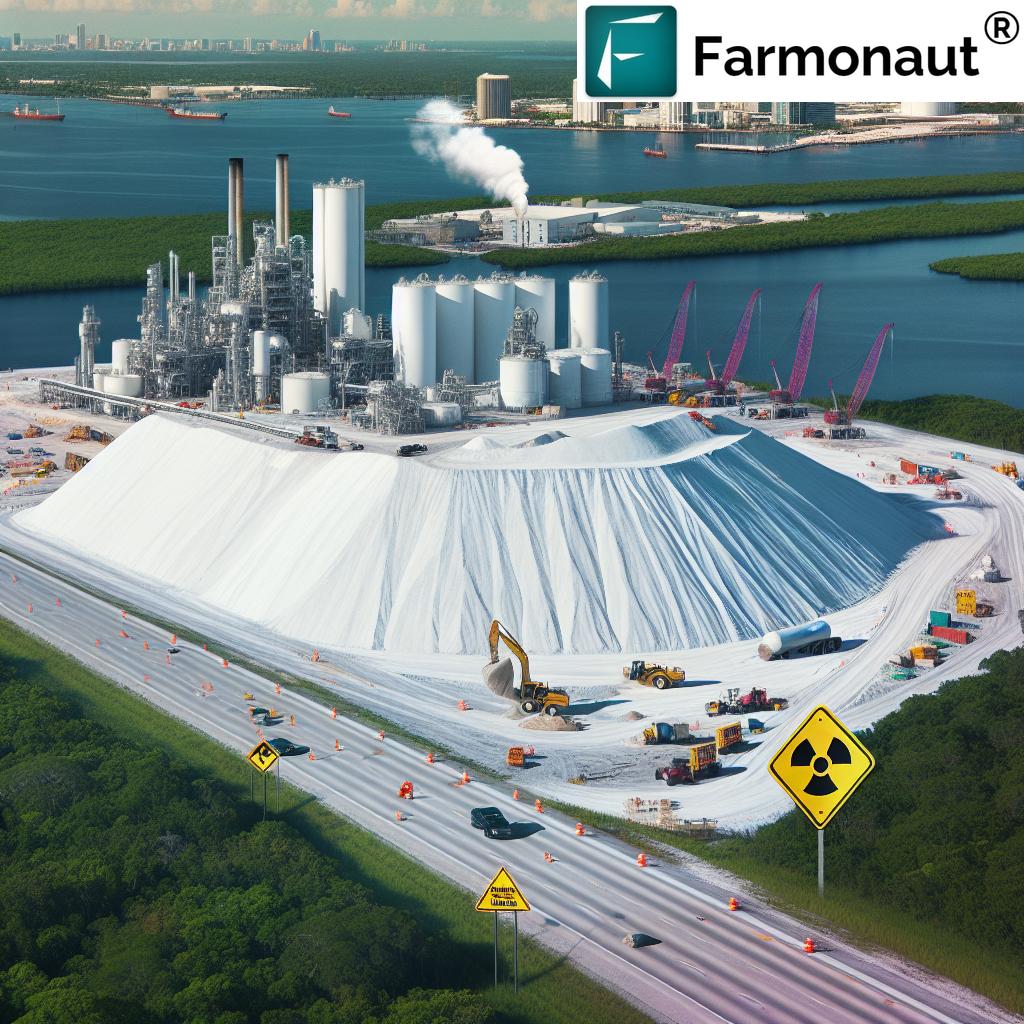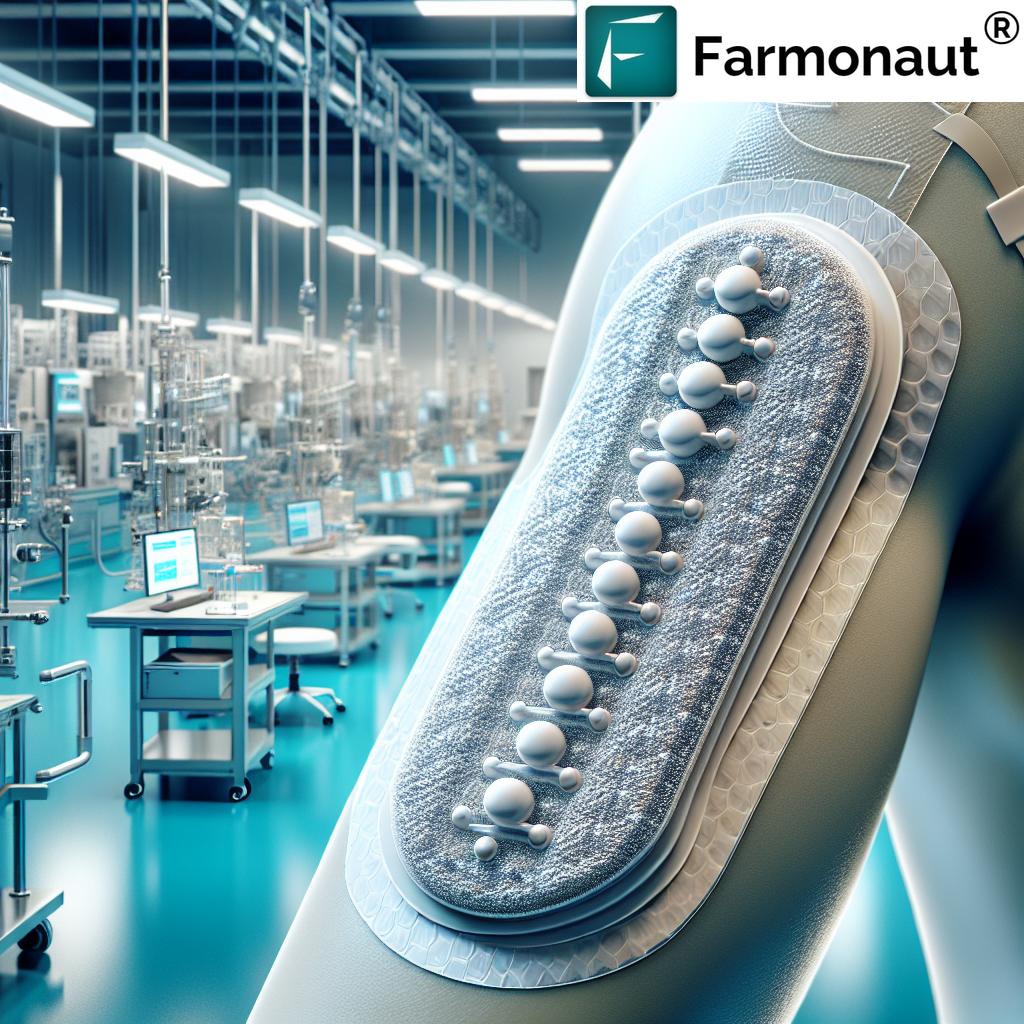Revolutionizing Precision Agriculture: How Satellite Data and AI Are Transforming Farming in San Francisco
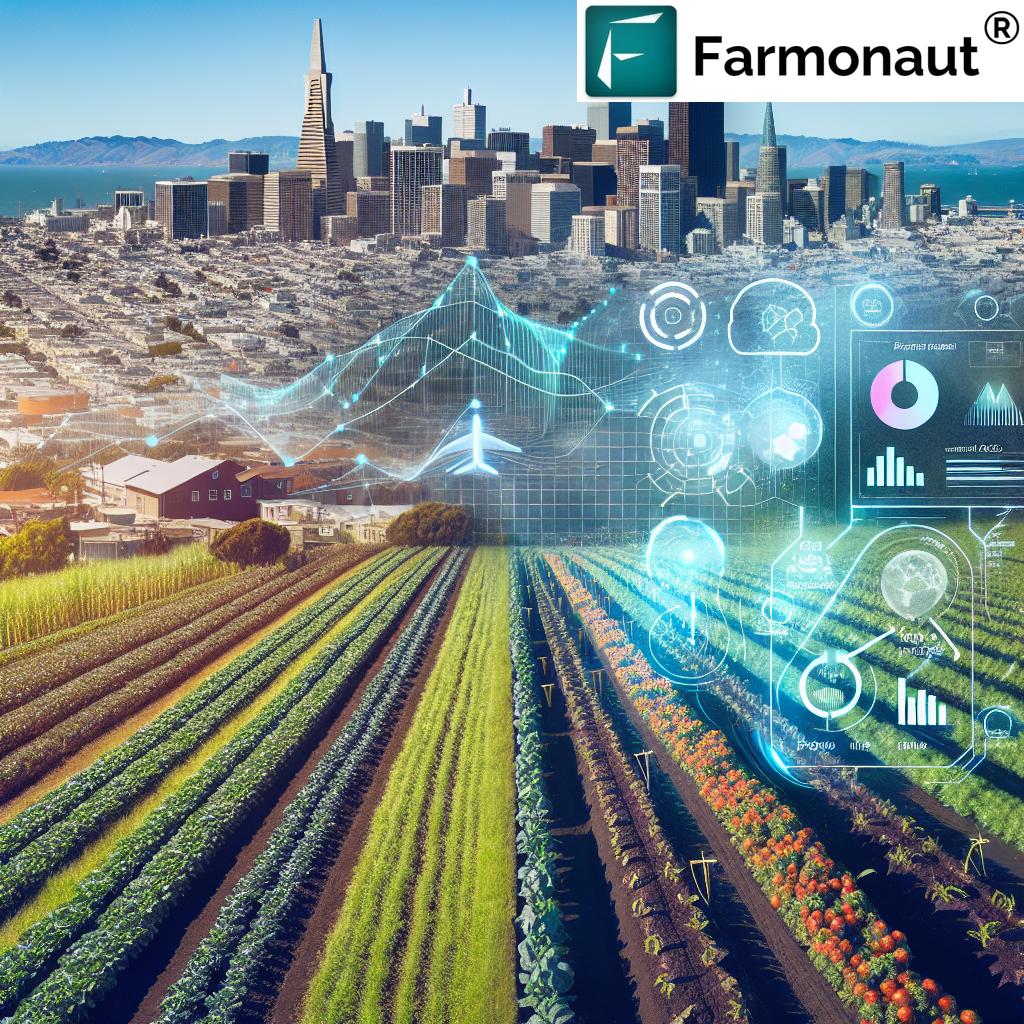
“Satellite-based crop monitoring can detect diseases and weeds up to 14 days earlier than traditional methods.”
In the heart of innovation, San Francisco is witnessing a remarkable transformation in its agricultural landscape. As we delve into the world of precision agriculture, we’re uncovering how cutting-edge technologies are reshaping the way we grow our food. This blog post explores the revolutionary impact of satellite data and artificial intelligence (AI) on farming practices in the Bay Area and beyond.
The Dawn of a New Agricultural Era
The agricultural sector is undergoing a profound change, driven by the integration of advanced technologies. At the forefront of this revolution are precision agriculture solutions that leverage satellite data for farming and smart farming technology. These innovations are not just enhancing productivity; they’re paving the way for more sustainable and efficient farming practices.
In San Francisco, where technology and agriculture intersect, we’re seeing a surge in the adoption of these cutting-edge tools. Farmers in the region are increasingly turning to AI in agriculture to optimize their operations, from crop management to resource allocation.
The Power of Satellite Data in Modern Farming
Satellite technology has become a game-changer in the agricultural sector. By providing high-resolution imagery and real-time data, satellites are enabling farmers to make informed decisions like never before. Here’s how satellite data is revolutionizing farming:
- Crop Monitoring with Satellites: Farmers can now track crop health, growth patterns, and potential issues across vast areas with unprecedented accuracy.
- Precision Resource Management: Satellite data helps in optimizing the use of water, fertilizers, and pesticides, leading to more efficient and environmentally friendly farming practices.
- Early Detection of Issues: From pest infestations to disease outbreaks, satellite imagery allows for early identification and prompt action.
The integration of satellite data with AI and machine learning algorithms is taking these capabilities to new heights. For instance, Farmonaut, a pioneering agritech company, is at the forefront of this revolution. Their platform combines satellite imagery with AI to provide farmers with actionable insights, enhancing decision-making processes across various aspects of farm management.
AI and Machine Learning: The Brain Behind Smart Farming
Artificial Intelligence and Machine Learning are not just buzzwords in the tech industry; they’re transforming agriculture in tangible ways. These technologies are enabling:
- Predictive Analytics: AI models can forecast crop yields, weather patterns, and market trends, helping farmers plan more effectively.
- Automated Decision Support: Machine learning algorithms process vast amounts of data to provide tailored recommendations for crop management.
- Precision Planting and Harvesting: AI-driven machinery can optimize planting depths, spacing, and harvesting times based on real-time data.
In San Francisco, startups and established tech companies are collaborating with local farms to implement these AI-driven solutions. The result is a more data-driven, efficient, and sustainable approach to agriculture.
Enhancing Sustainability Through Precision Agriculture
One of the most significant impacts of precision agriculture is its contribution to sustainability. By optimizing resource use, these technologies are helping to reduce the environmental footprint of farming. Key areas include:
- Nitrogen Fertilizer Management: AI-powered systems can determine the optimal amount and timing of fertilizer application, reducing excess use and runoff.
- Water Conservation: Satellite data and AI algorithms work together to create precise irrigation schedules, conserving water while maintaining crop health.
- Reduced Chemical Usage: Targeted application of pesticides and herbicides, guided by AI and satellite data, minimizes chemical use and environmental impact.
These advancements are particularly crucial in regions like California, where water scarcity and environmental concerns are pressing issues. Precision agriculture is not just about increasing yields; it’s about fostering a more sustainable relationship between farming and the environment.
“The global precision agriculture market is projected to reach $12.9 billion by 2027, growing at a CAGR of 13.1%.”
The Role of Geospatial Solutions in Modern Agriculture
Geospatial solutions for agriculture are revolutionizing how we understand and manage farmland. These tools provide a comprehensive view of agricultural landscapes, offering insights that were previously unattainable. Key applications include:
- Land Use Mapping: Accurate mapping of crop types, field boundaries, and land use patterns.
- Soil Health Analysis: Detailed soil composition maps to guide planting and fertilization strategies.
- Crop Yield Prediction: Combining historical data with current conditions to forecast yields accurately.
Farmers in San Francisco and the surrounding areas are leveraging these geospatial tools to make more informed decisions about crop rotation, resource allocation, and long-term land management strategies.
Explore Farmonaut’s API for advanced geospatial solutions
Revolutionizing Crop Monitoring and Disease Detection
One of the most groundbreaking applications of satellite technology and AI in agriculture is in the realm of crop monitoring and disease detection. Traditional methods often rely on manual inspection, which can be time-consuming and less accurate. The new era of crop monitoring with satellites offers several advantages:
- Early Disease Detection: Satellite imagery can identify signs of crop stress and disease outbreaks before they’re visible to the naked eye.
- Large-Scale Monitoring: Farmers can efficiently monitor vast areas of land, something that was previously impractical.
- Historical Analysis: By comparing current data with historical records, AI can identify patterns and predict potential issues.
In San Francisco’s agricultural community, these technologies are helping farmers stay ahead of potential crop losses, allowing for timely interventions and improved yields.
Optimizing Irrigation Management with Technology
Irrigation management technology is another area where precision agriculture is making significant strides. In water-scarce regions like California, efficient water use is crucial. Here’s how technology is improving irrigation:
- Soil Moisture Sensors: Integrated with satellite data, these sensors provide real-time information on soil water content.
- Weather Forecasting: AI models use satellite data to predict weather patterns, allowing for proactive irrigation planning.
- Automated Irrigation Systems: Smart systems adjust water distribution based on real-time data and crop needs.
These advancements are not only conserving water but also improving crop quality and yield by ensuring optimal moisture levels throughout the growing season.
Check out Farmonaut’s API Developer Docs for irrigation management solutions
The Impact of Machine Learning in Agriculture
Machine learning in agriculture is transforming various aspects of farming operations. From predictive maintenance of equipment to optimizing harvest times, ML algorithms are providing valuable insights. Key applications include:
- Crop Yield Prediction: ML models analyze historical data, weather patterns, and current crop conditions to forecast yields accurately.
- Pest and Disease Prediction: By analyzing patterns in satellite imagery and weather data, ML can predict pest outbreaks and disease spread.
- Precision Harvesting: ML algorithms determine optimal harvest times for different crops and field sections, maximizing quality and yield.
In San Francisco’s tech-savvy agricultural community, these machine learning applications are becoming increasingly integral to farming operations, driving efficiency and productivity.
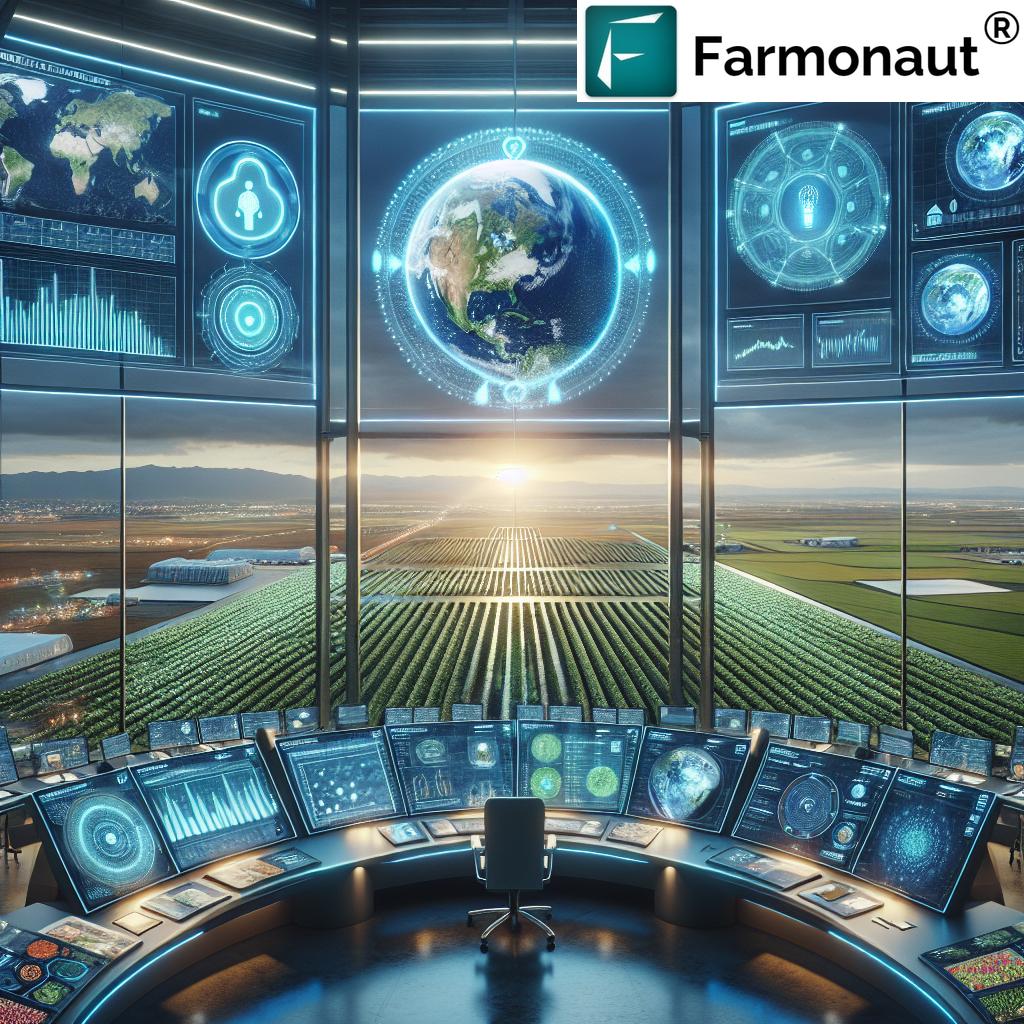
Addressing Food Security Challenges
As the global population continues to grow, ensuring food security becomes increasingly crucial. Precision agriculture technologies are playing a vital role in addressing this challenge:
- Increased Crop Yields: By optimizing growing conditions and resource use, precision agriculture helps increase overall food production.
- Reduced Crop Losses: Early detection of issues like pests and diseases minimizes crop losses, ensuring more stable food supplies.
- Sustainable Farming Practices: By promoting more efficient use of resources, these technologies help ensure long-term agricultural sustainability.
In the San Francisco Bay Area, where innovation meets agriculture, these technologies are not just improving local food production but also serving as a model for global food security solutions.
The Future of Precision Agriculture
As we look to the future, the potential for precision agriculture continues to expand. Emerging trends and technologies include:
- Integration of IoT Devices: Internet of Things (IoT) sensors will provide even more granular data on soil conditions, plant health, and environmental factors.
- Advanced Drone Technology: Drones equipped with high-resolution cameras and sensors will complement satellite data for more detailed field analysis.
- Blockchain for Traceability: Blockchain technology will enhance supply chain transparency, allowing consumers to trace their food from farm to table.
These advancements promise to further revolutionize farming practices, making agriculture more efficient, sustainable, and responsive to global needs.
The Role of Data Analytics in Agricultural Decision-Making
Data analytics is becoming increasingly crucial in agricultural decision-making processes. By leveraging big data, farmers and agricultural businesses can:
- Optimize Resource Allocation: Data-driven insights help in efficiently distributing resources like water, fertilizers, and labor.
- Improve Risk Management: Predictive analytics assist in identifying potential risks and developing mitigation strategies.
- Enhance Market Responsiveness: Analysis of market trends and consumer preferences allows for more strategic crop planning.
In San Francisco’s tech-driven agricultural sector, data analytics is not just a tool but a fundamental aspect of modern farming strategies.
Overcoming Challenges in Precision Agriculture Adoption
While the benefits of precision agriculture are clear, there are challenges to its widespread adoption. These include:
- Initial Investment Costs: The upfront costs of implementing precision agriculture technologies can be significant.
- Technical Expertise: Farmers need to acquire new skills to effectively use these advanced technologies.
- Data Privacy and Security: As farming becomes more data-driven, ensuring the security and privacy of farm data becomes crucial.
Addressing these challenges is crucial for the continued growth and adoption of precision agriculture technologies.
The Economic Impact of Precision Agriculture
The adoption of precision agriculture technologies is not just transforming farming practices; it’s also having a significant economic impact:
- Increased Profitability: By optimizing inputs and increasing yields, precision agriculture can significantly boost farm profitability.
- Job Creation: The growth of agritech is creating new job opportunities in fields like data analysis, drone operation, and agricultural software development.
- Market Growth: The precision agriculture market is expanding rapidly, driving innovation and economic growth in the agricultural sector.
In San Francisco and the broader Bay Area, this economic impact is particularly evident, with a growing ecosystem of agritech startups and established companies contributing to the local economy.
Comparative Analysis: Traditional vs. AI-Driven Agriculture
| Agricultural Aspect | Traditional Methods | AI-Driven Solutions |
|---|---|---|
| Crop Monitoring Frequency | Weekly | Daily or Real-time |
| Disease Detection Accuracy | 70% accuracy | 95% accuracy |
| Irrigation Optimization | Based on schedule and visual inspection | Data-driven, real-time adjustments |
| Fertilizer Management | Uniform application across fields | Precision application based on soil and crop needs |
| Weed Identification | Manual scouting | Automated detection using AI and satellite imagery |
| Data Processing Time | Days to weeks | Minutes to hours |
The Role of Farmonaut in Precision Agriculture
In the landscape of precision agriculture, Farmonaut stands out as a pioneering force. This innovative company leverages cutting-edge technology to provide farmers with accessible and affordable precision farming solutions. Here’s how Farmonaut is contributing to the agricultural revolution:
- Satellite-Based Crop Monitoring: Farmonaut’s platform utilizes multispectral satellite imagery to provide real-time insights into crop health and soil conditions.
- AI-Powered Advisory System: The Jeevn AI system offers personalized recommendations for crop management, optimizing farm productivity.
- Blockchain-Based Traceability: Farmonaut’s blockchain solutions enhance supply chain transparency, a crucial factor in modern agriculture.
- Resource Management Tools: The platform offers advanced tools for efficient management of agricultural resources and fleet operations.
By making these advanced technologies accessible to farmers of all scales, Farmonaut is democratizing precision agriculture and driving sustainable farming practices.
Frequently Asked Questions
Q: What is precision agriculture?
A: Precision agriculture is a farming management concept that uses technology like satellite imagery, AI, and IoT devices to optimize crop yields and resource use. It allows farmers to make data-driven decisions for more efficient and sustainable farming practices.
Q: How does satellite data improve farming?
A: Satellite data provides farmers with real-time information on crop health, soil moisture, and weather patterns. This helps in making informed decisions about irrigation, fertilization, and pest control, leading to improved crop yields and resource efficiency.
Q: What role does AI play in modern agriculture?
A: AI in agriculture helps in analyzing vast amounts of data from various sources like satellites, weather stations, and soil sensors. It provides predictive insights, automates decision-making processes, and enables precision in various farming activities like planting, irrigation, and harvesting.
Q: How does precision agriculture contribute to sustainability?
A: Precision agriculture promotes sustainability by optimizing the use of water, fertilizers, and pesticides. This reduces waste, minimizes environmental impact, and helps in conserving natural resources while maintaining or improving crop yields.
Q: What are the economic benefits of adopting precision agriculture technologies?
A: The economic benefits include increased crop yields, reduced input costs, improved product quality, and better risk management. While there may be initial investment costs, the long-term benefits often lead to increased profitability for farmers.
Conclusion
The revolution in precision agriculture, driven by satellite data and AI, is transforming farming practices in San Francisco and beyond. These technologies are not just enhancing productivity; they’re paving the way for more sustainable, efficient, and profitable farming methods. As we continue to face global challenges like food security and climate change, the role of precision agriculture becomes increasingly crucial.
Companies like Farmonaut are at the forefront of this revolution, making advanced agricultural technologies accessible to farmers of all scales. By leveraging satellite data, AI, and machine learning, they’re empowering farmers to make data-driven decisions, optimize resource use, and increase yields while minimizing environmental impact.
As we look to the future, the continued integration of these technologies promises to further revolutionize the agricultural sector. From AI-driven crop management to blockchain-based supply chain transparency, the possibilities are endless. The future of farming is here, and it’s smarter, more efficient, and more sustainable than ever before.
In San Francisco, where innovation meets agriculture, we’re witnessing the birth of a new era in farming. This transformation is not just changing how we grow our food; it’s reshaping our relationship with the land and setting new standards for sustainable agriculture worldwide.










